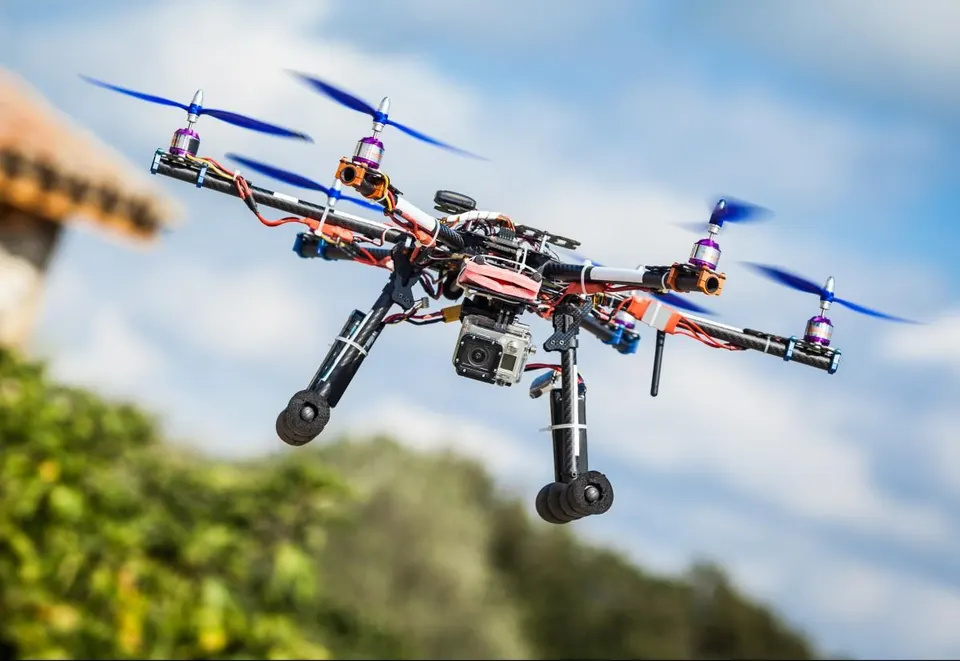
In the ever-evolving landscape of security technology, perimeter security drone has emerged as a game-changing innovation. Therefore, it is revolutionizing the way organizations protect their boundaries. Equipped with cutting-edge features, these drones go beyond traditional surveillance methods, offering autonomous patrolling. Moreover, it has real-time surveillance, and advanced threat detection capabilities. In this exploration, we delve into the key attributes that make perimeter safekeeping drones an indispensable asset in fortifying the safety of critical infrastructures.
Autonomous Patrolling
One of the defining features of perimeter safety drones is their ability to conduct autonomous patrolling. Moreover, these drones can navigate and monitor large areas continuously without human intervention. This autonomy significantly enhances the efficiency of perimeter surveillance, ensuring that no section of the boundary is left unchecked. By leveraging advanced navigation systems, these drones follow predefined routes, providing a consistent and reliable layer of security.
Real-time Surveillance
Equipped with state-of-the-art cameras and sensors, border security drones offer real-time surveillance capabilities. This means that security personnel can access live video feeds and sensor data from the drone’s perspective. However, it is enabling immediate detection and response to security breaches. The ability to view events in real-time enhances situational awareness, allowing for prompt decision-making and intervention in the event of a security incident.
Intruder Detection
Border security drones leverage sophisticated artificial intelligence (AI) algorithms to detect and identify potential intruders or suspicious activities along the perimeter. These algorithms analyze the captured data in real time, distinguishing between routine movements and security threats. This intelligent intrusion detection system enhances the overall security infrastructure by minimizing false alarms and providing accurate alerts when potential risks are identified.
Thermal Imaging Technology
A perimeter security drone is equipped with thermal imaging technology to address the challenges of low-light conditions. This advanced feature allows the drones to detect heat signatures, making them effective even during nighttime surveillance. Thermal imaging enhances visibility in the dark but also aids in identifying intruders attempting to evade traditional cameras. Although with 24/7 surveillance capabilities, these drones ensure a constant watch over the perimeter, regardless of external lighting conditions.
Rapid Response Capability
Security drones are crucial in rapidly responding to potential security breaches or incidents. Moreover, these drones empower quick decision-making and intervention by swiftly assessing threats and relaying critical data to security personnel. The speed of response is a pivotal factor in preventing unauthorized access or addressing security issues promptly. Integrating security drones ensures a proactive approach to security, reducing the risk of incidents escalating into more significant threats.
Customizable Flight Paths
Drones designed for perimeter security often offer customizable flight paths, allowing security teams to tailor surveillance routes based on specific needs. This customization ensures comprehensive coverage of the entire perimeter, including areas that may be challenging to monitor through traditional means. The flexibility in defining flight paths enables security personnel to adapt the drone’s surveillance strategy to evolving security requirements or changing threat landscapes.
Integration with Security Systems
Border security drones are to flawlessly mix into existing security systems, creating a cohesive and enhanced security solution. This integration may include connecting with alarm systems, sensors, and central monitoring stations. By sharing data and insights with other security infrastructure elements, drones contribute to a more comprehensive and interconnected security network. This collaborative approach ensures that security personnel have access to a unified platform for monitoring and responding to potential threats.
Conclusion
In conclusion, the deployment of perimeter security drone represents a significant leap forward in safeguarding critical infrastructures and sensitive areas. However, the combination of autonomous patrolling, real-time surveillance, and advanced threat detection capabilities makes these drones indispensable tools for security professionals. As technology advances, edge safekeeping drones’ capabilities are likely to expand, further enhancing their role in fortifying the perimeters of critical facilities, industrial complexes, and other high-security environments. The era of autonomous surveillance has dawned, and perimeter safety drones stand at the forefront. Therefore, it poised to redefine the standards of safety and protection in the modern age.
